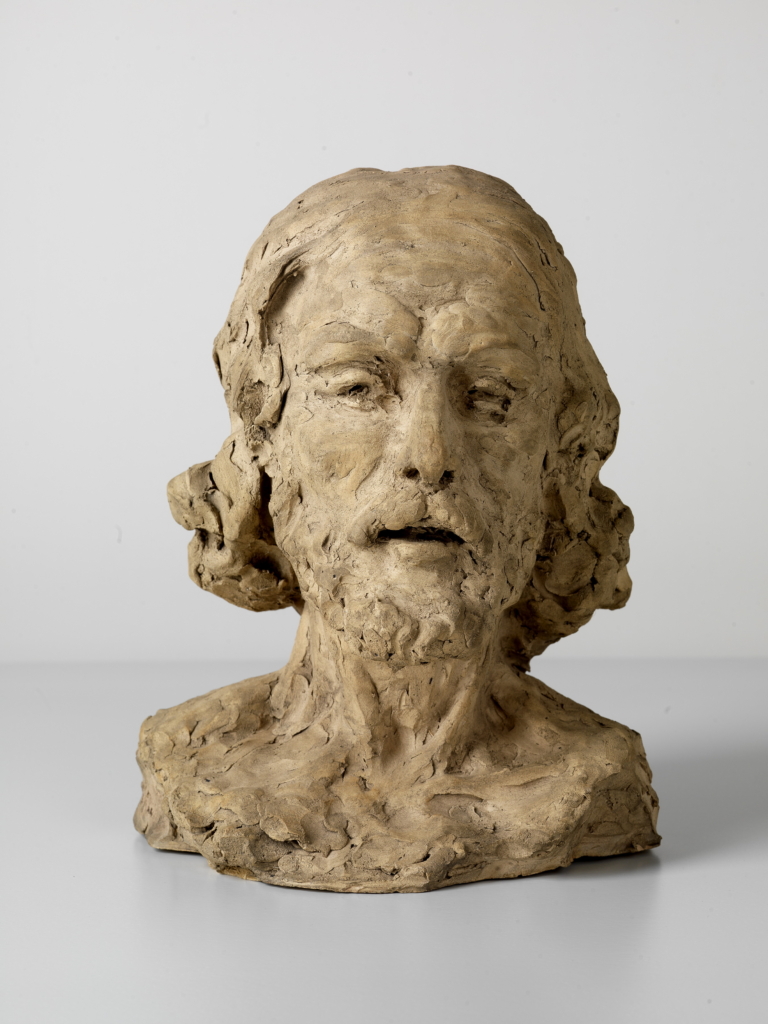
| X (Twitter) | |
|---|---|
URL kopieren
Die URL wurde erfolgreich kopiert und befindet sich in der Zwischenablage |
|
Aus urheberrechtlichen Gründen können wir die Werkabbildung leider nicht zum Download bereitstellen.
Hier erfahren Sie mehr.The head of John the Baptist
Auguste Rodin
H 23.7cm W 30.5cm D 21.1cm
1877/78
KunsthalleKarlsruhe@ZKM
Highlights
0:00
0:00
Three-dimensional sketch
Facial features emerge from the raw clay, vivid and expressive. Rodin’s Head of John presents itself as a work that still seems to be in the middle of the creative process.
You could almost imagine the clay was still soft and wet. Auguste Rodin’s head of John the Baptist from 1878 still seems to be mid creative process. Let your eyes move slowly across the animated surface. In some places, you can even see a fingerprint from the sculptor himself. The face emerges from the raw sculptural material, lively and expressive.
Snapshot of a prophet
The mouth is slightly open as if the subject is about to speak and, indeed, speaking, preaching, prophecy and proclamation are essential to the figure of John the Baptist. Rodin’s study of the head represents the core of the biblical narrative, like a three-dimensional snapshot, and the essence of the disciple. This man has a message.
Search for immediacy
Rodin created this three-dimensional sketch, a so-called bozzetto, as a study for an oversized sculpture of John the Baptist. The model was a man from Abruzzo, Italy who had never posed for an artist before. Rodin hated nothing more than the cliche model poses of academic art. He sought immediacy of expression. His sculptural art is often compared to the rapid, sketchy, painting style of the Iimpressionists, but Rodin’s art points beyond this for because it unites both impression and expression, spontaneous impression combined with deep expression.
Dates and facts
| Title | The head of John the Baptist |
|---|---|
| Artist | Auguste Rodin |
| Date | 1877/78 |
| Measurements Plastic | H 30.5cm W 23.7cm D 21.1cm |
| Material | Terrakotta |